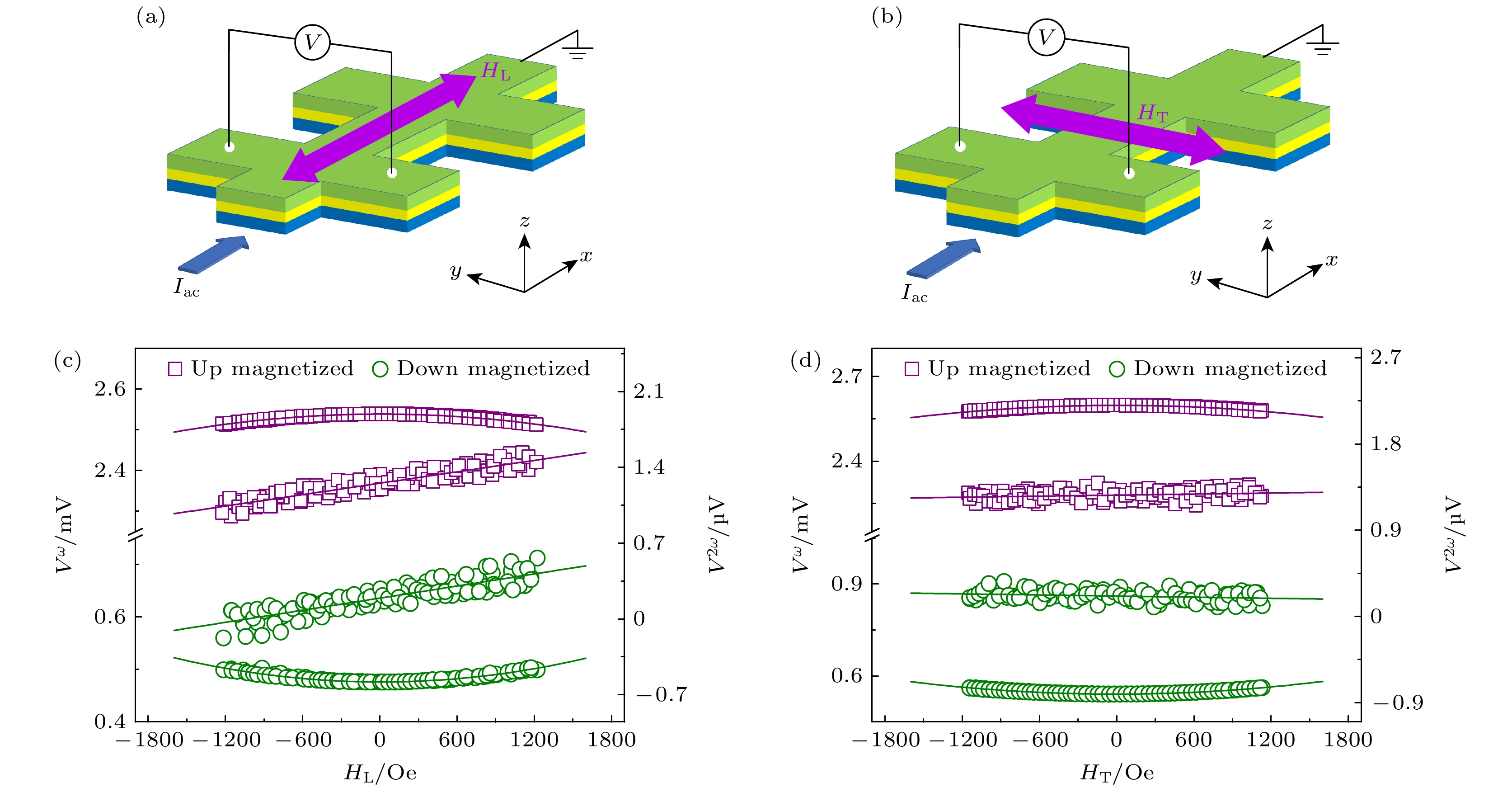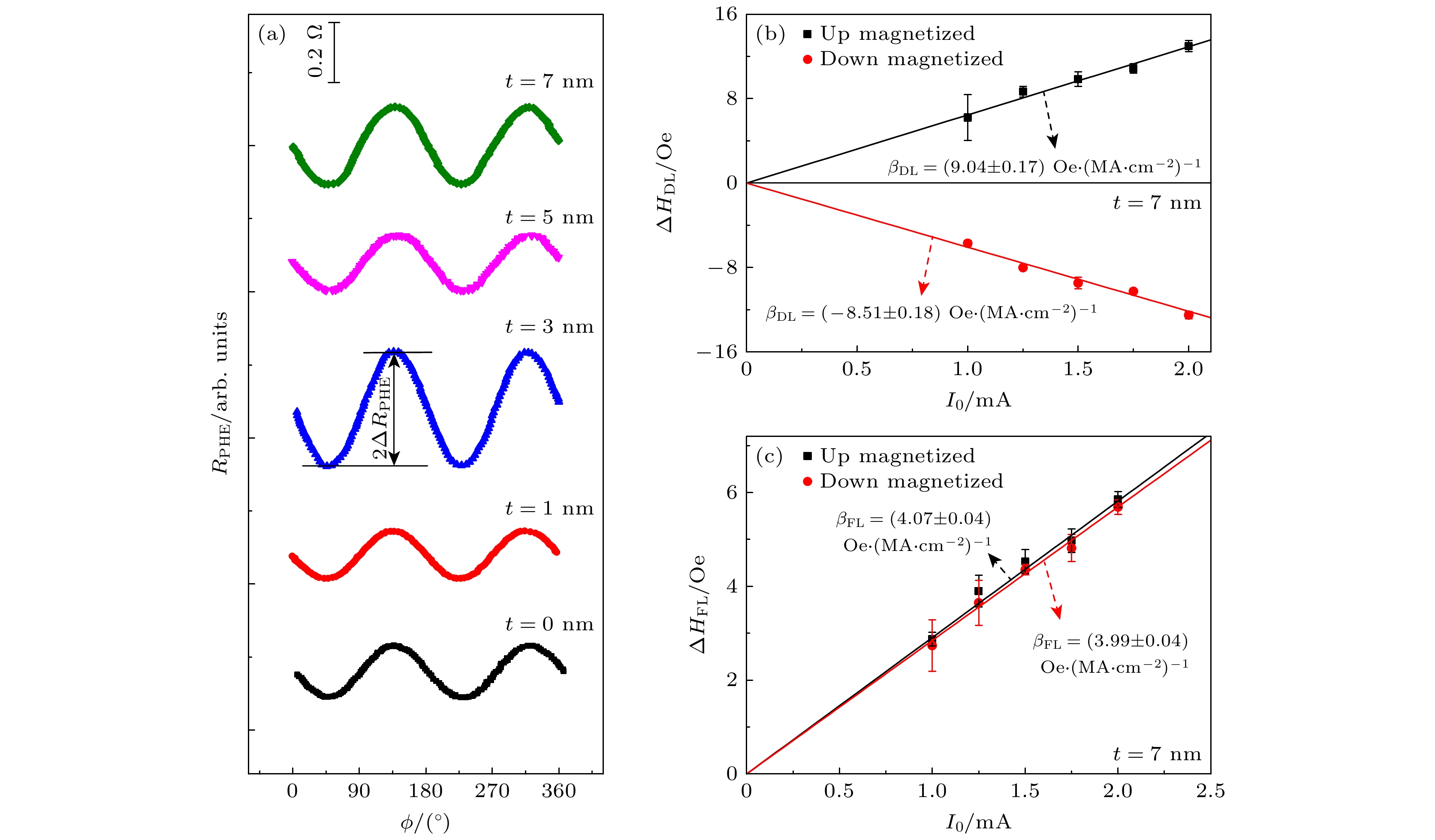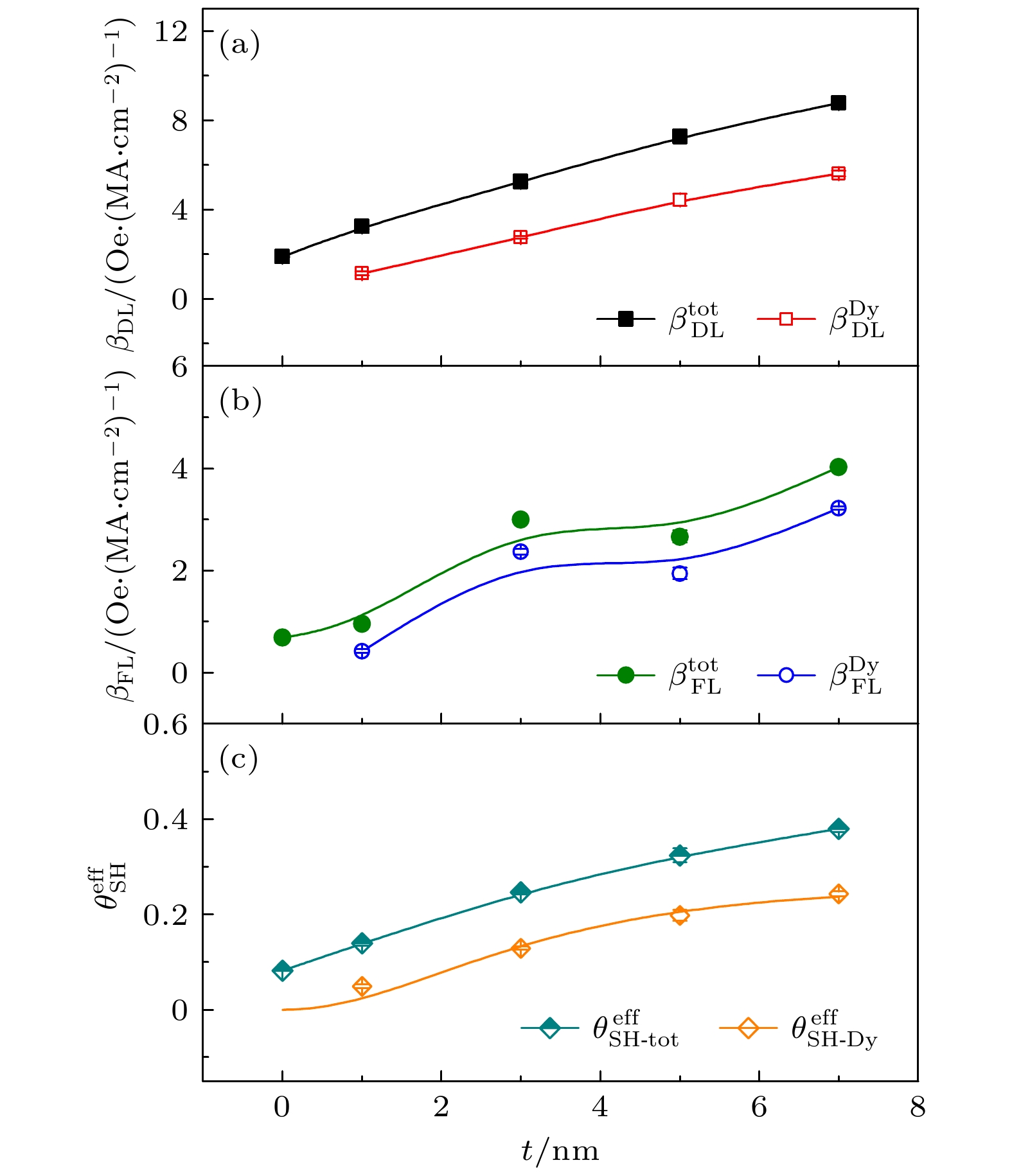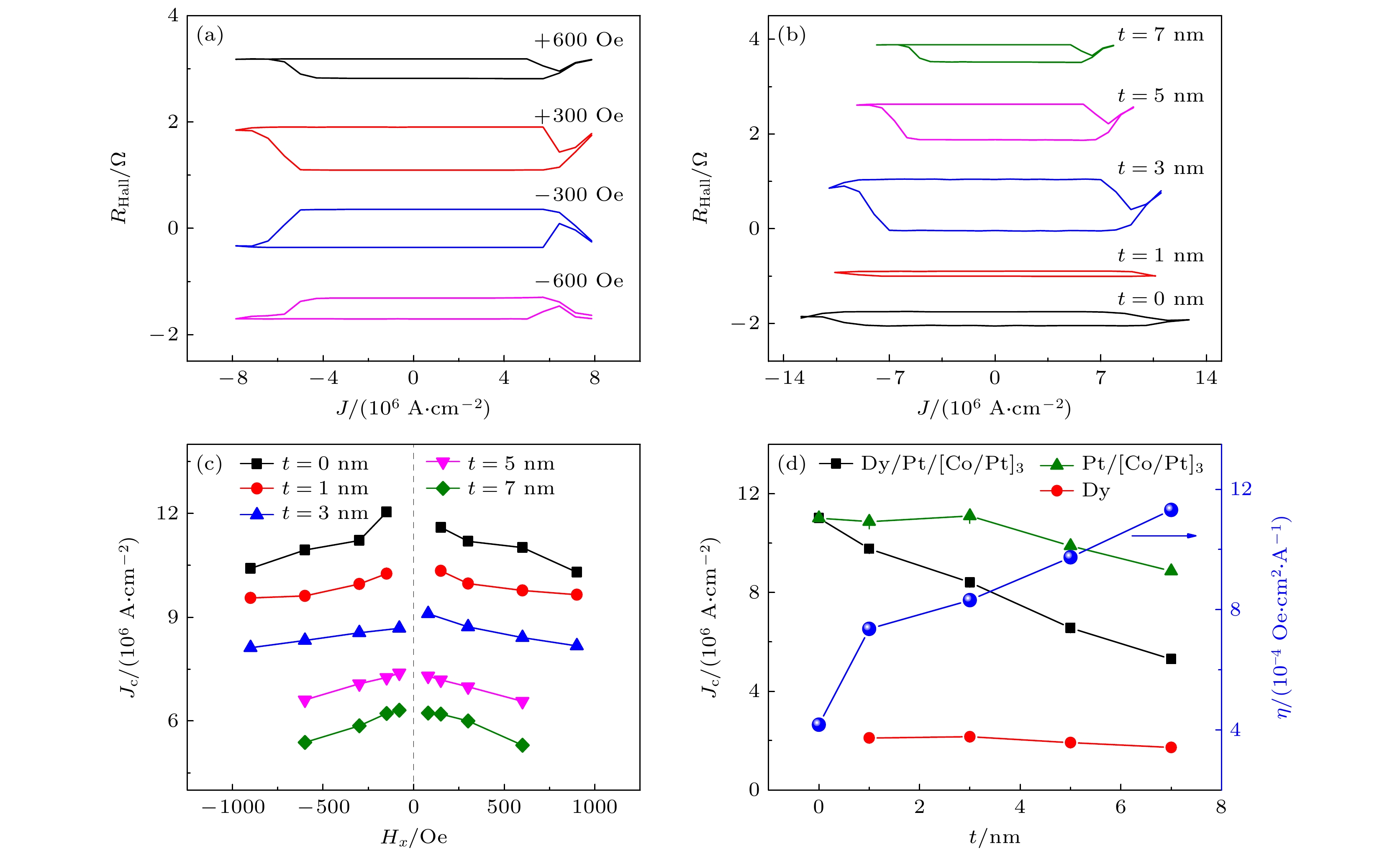-
Spin-orbit torque (SOT) based on the spin-orbit coupling (SOC) effect has received increasing attention in magnetic information storage, logical operation and neuron simulation devices because it can effectively manipulate magnetization conversion, chiral magnetic domain walls, and magnetic skyrmion motions. Further improvement of the SOT efficiency and reduction of the driving current density are crucial scientific problems to be solved for high-density and low-power applications of SOT-based spintronic devices. The heavy rare-earth metal dysprosium (Dy) possesses a relatively strong SOC due to the partially filled f orbital electrons (4f10), which is expected to generate spin Hall torques. In this work, the influences of Dy thickness on the SOT efficiency and SOT-driven magnetic reversal are explored in the Dy/Pt/[Co/Pt]3 magnetic multilayers, where the rare-earth Dy and [Co/Pt]3 are used as a spin-source layer and a perpendicularly magnetized ferromagnetic layer, respectively. A series of Dy/Pt/[Co/Pt]3 heterostructures with the values of Dy layer thickness (tDy) of 1, 3, 5 and 7 nm is fabricated by ultrahigh-vacuum magnetron sputtering. The perpendicular magnetic anisotropy, SOT efficiency, spin Hall angle and current-induced magnetization switching are characterized using the magnetic property and electrical transport measurements. The results show that the conversion field and magnetic anisotropic field decrease with the increase of tDy, revealing that the magnetic parameters can be regulated by the bottom Dy layer due to their structural sensitivity. However, both damping-like SOT efficiency and effective spin Hall angle (θeff SH) gradually increase with the increase of tDy, indicating that the rare-earth Dy can provide additional spin current to enhance the SOT efficiency apart from the contribution of Pt/[Co/Pt]3. Particularly, the maximum value of θeff SHof 0.379±0.008 is achieved when tDy is 7 nm. According to the fitting analysis of the drift-diffusion model, the intrinsic spin Hall angle and spin diffusion length of the rare-earth Dy are extracted to be 0.260±0.039 and (2.234±0.383) nm, respectively, suggesting that Dy can be used as an ideal spin-source material. In addition, the critical conversion current density (Jc) gradually decreases with the increase of tDy, and Jc reaches a minimum value of approximately 5.3×106 A/cm2 at tDy = 7 nm, which is mainly attributed to the increase of the damping-like SOT and slight decrease of the switching field. These results experimentally demonstrate a strong spin Hall effect of the rare-earth Dy, and provide a feasible route for designing SOT-based spintronic devices with low-power dissipation.
-
图 1 (a) Dy/Pt/[Co/Pt]3多层膜的结构示意图; (b)霍尔器件的光学显微图像和电输运测量示意图; (c)不同Dy厚度样品的反常霍尔曲线, 测试电流为1 mA, 插图为t = 7 nm样品的面内磁滞回线; (d)饱和磁化强度、翻转场和磁各向异性常数随Dy层厚度的变化关系
Figure 1. (a) Schematic diagram of a Dy/Pt/[Co/Pt]3 stack; (b) optical image of the Hall device accompanied by a schematic measurement setup; (c) anomalous Hall loops for stacks with varying Dy layer thicknesses measured at I = 1 mA, and the inset presents the in-plane magnetic hysteresis loop for the stack with t = 7 nm; (d) dependence of Ms, Hsw, and Ku on Dy layer thickness.
图 2 类阻尼(a)和类场(b)有效场的测量示意图; 一阶谐波电压(Vω)和二阶谐波电压(V2ω)随面内纵向扫描磁场HL(c)和横向扫描磁场HT(d)的变化关系
Figure 2. Schematic measurement setups of damping-like (a) and field-like (b) effective fields; representative first (Vω) and second (V2ω) harmonic voltages as functions of in-plane longitudinal magnetic field HL (c) and transverse magnetic field HT (d).
图 3 (a)平面霍尔电阻随方位角ϕ的变化关系; 平面霍尔效应修正的类阻尼有效场(b)和类场有效场(c)随正弦电流幅值I0的依赖关系
Figure 3. (a) Dependence of the planar Hall resistance on the azimuthal angle ϕ for stacks with different Dy layer thicknesses; Calibrated damping-like (b) and field-like (c) effective fields against the amplitude of the input sinusoidal current by considering the planar Hall effect.
图 5 (a) t = 7 nm样品在不同面内辅助场Hx的电流驱动磁矩翻转回线; (b)不同Dy层厚度样品在Hx = +600 Oe的电流驱动磁矩翻转回线; (c)不同Dy层厚度样品的电流驱动磁矩翻转相图; (d) Hx = +600 Oe时Dy/Pt/[Co/Pt]3, Pt/[Co/Pt]3和Dy层中临界翻转电流密度以及翻转效率随Dy层厚度的变化关系
Figure 5. (a) Current-driven magnetization switching loops for the stack with t = 7 nm under various in-plane bias magnetic fields; (b) current-driven magnetization switching loops for stacks with different Dy layer thicknesses under Hx = +600 Oe; (c) switching phase diagram for stacks with different Dy layer thicknesses; (d) dependence of the critical switching current density in the Dy/Pt/[Co/Pt]3, Pt/[Co/Pt]3 and Dy layers as well as the switching efficiency on Dy layer thickness under Hx = +600 Oe.
-
[1] Bhatti S, Sbiaa R, Hirohata A, Ohno H, Fukami S, Piramanayagam S N 2017 Mater. Today 20 530
 Google Scholar
Google Scholar
[2] Tudu B, Tiwari A 2017 Vacuum 146 329
 Google Scholar
Google Scholar
[3] Garello K, Avci C O, Miron I M, Baumgartner M, Ghosh A, Auffret S, Boulle O, Gaudin G, Gambardella P 2014 Appl. Phys. Lett. 105 212402
 Google Scholar
Google Scholar
[4] Resnati D, Goda A, Nicosia G, Miccoli C, Spinelli A S, Compagnoni C M 2017 IEEE Electron Device Lett. 38 461
 Google Scholar
Google Scholar
[5] Yu G Q 2018 Nat. Electronics. 1 496
 Google Scholar
Google Scholar
[6] Cubukcu M, Boulle O, Mikuszeit N, Hamelin C, Brächer T, Lamard N, Cyrille M C, Buda-Prejbeanu L, Garello K, Miron I M 2018 IEEE Trans. Magn. 54 81
[7] Liu L, Lee O J, Gudmundsen T J, Ralph D C, Buhrman R A 2012 Phys. Rev. Lett. 109 096602
 Google Scholar
Google Scholar
[8] Emori S, Bauer U, Ahn S M, Martinez E, Beach G S 2013 Nat. Mater. 12 611
 Google Scholar
Google Scholar
[9] Fert A, Cros V, Sampaio J 2013 Nat. Nanotechnol. 8 152
 Google Scholar
Google Scholar
[10] Liu J H, Wang Z D, Xu T, Zhou H A, Zhao L, Je S G, Im M Y, Fang L, Jiang W J 2022 Chin. Phys. Lett. 39 017501
 Google Scholar
Google Scholar
[11] Demidov V E, Urazhdin S, Ulrichs H, Tiberkevich V, Slavin A, Baither D, Schmitz G, Demokritov S O 2012 Nat. Mater. 11 1028
 Google Scholar
Google Scholar
[12] Li L Y, Chen L N, Liu R H, Du Y W 2020 Chin. Phys. B 29 117102
 Google Scholar
Google Scholar
[13] Miron I M, Garello K, Gaudin G, Zermatten P J, Costache M V, Auffret S, Bandiera S, Rodmacq B, Schuhl A, Gambardella P 2011 Nature 476 189
 Google Scholar
Google Scholar
[14] Pai C F, Ou Y, Henrique L, Vilela-Le~ao L H, Ralph D C, Buhrman R A 2015 Phys. Rev. B 92 064426
 Google Scholar
Google Scholar
[15] Liu L, Pai C F, Li Y, Tseng H W, Ralph D C, Buhrman R A 2012 Science 336 555
 Google Scholar
Google Scholar
[16] Haney P M, Lee H W, Lee K J, Manchon A, Stiles M D 2013 Phys. Rev. B 87 174411
 Google Scholar
Google Scholar
[17] Rojas-Sánchez J C, Reyren N, Laczkowski P, Savero W, Attané J P, Deranlot C, Jamet M, George J M, Vila L, Jaffrès H 2014 Phys. Rev. Lett. 112 106602
 Google Scholar
Google Scholar
[18] Zhang W, Han W, Jiang X, Yang S H, Parkin S S P 2015 Nat. Phys. 11 496
 Google Scholar
Google Scholar
[19] Nguyen M H, Ralph D C, Buhrman R A 2016 Phys. Rev. Lett. 116 126601
 Google Scholar
Google Scholar
[20] Zhang C, Fukami S, Watanabe K, Ohkawara A, Gupta S D, Sato H, Matsukura F, Ohno H 2016 Appl. Phys. Lett. 109 192405
 Google Scholar
Google Scholar
[21] Han J, Richardella A, Siddiqui S A, Finley J, Samarth N, Liu L 2017 Phys. Rev. Lett. 119 077702
 Google Scholar
Google Scholar
[22] Zheng Z Y, Zhang Y, Zhu D Q, Zhang K, Feng X Q, He Y, Chen L, Zhang Z Z, Liu D J, Zhang Y G, Amiri P K, Zhao W S 2020 Chin. Phys. B 29 078505
 Google Scholar
Google Scholar
[23] Lü W, Jia Z, Wang B, Lu Y, Luo X, Zhang B, Zeng Z, Liu Z 2018 ACS Appl. Mater. Interfaces 10 2843
 Google Scholar
Google Scholar
[24] Shao Q, Yu G, Lan Y W, Shi Y, Li M Y, Zheng C, Zhu X, Li L J, Amiri P K, Wang K L 2016 Nano Lett. 16 7514
 Google Scholar
Google Scholar
[25] Wang F, Shi G Y, Kim K W, Park H J, Jang J G, Tan H R, Lin M, Liu Y K, Kim T, Yang D S, Zhao S S, Lee K, Yang S H, Soumyanarayanan A, Lee K J, Yang H 2024 Nat. Mater. 23 768
 Google Scholar
Google Scholar
[26] 魏陆军, 李阳辉, 普勇 2024 73 018501
Wei L J, Li Y H, Pu Y 2024 Acta Phys. Sin. 73 018501
[27] Liu L, Qin Q, Lin W N, Li C J, Xie Q D, He S K, Shu X Y, Zhou C H, Lim Z, Yu J H, Lu W L, Li M S, Yan X B, Pennycook S J, Chen J S 2019 Nat. Nanotechnol. 14 939
 Google Scholar
Google Scholar
[28] Liu Q B, Li J W, Zhu L J, Lin X, Xie X Y, Zhu L J 2022 Phys. Rev. Appl. 18 054079
 Google Scholar
Google Scholar
[29] Zhu L J, Ralph D C, Buhrman R A 2018 Phys. Rev. Appl. 10 031001
 Google Scholar
Google Scholar
[30] Reynolds N, Jadaun P, Heron J T, Jermain C L, Gibbons J, Collette R, Buhrman R A, Schlom D G, Ralph D C 2017 Phys. Rev. B 95 064412
 Google Scholar
Google Scholar
[31] Ueda K, Pai C F, Tan A J, Mann M, Beach G S D 2016 Appl. Phys. Lett. 108 232405
 Google Scholar
Google Scholar
[32] Wong Q Y, Murapaka C, Law W C, Gan W L, Lim G J, Lew W S 2019 Phys. Rev. Appl. 11 024057
 Google Scholar
Google Scholar
[33] Jin T L, Law W C, Kumar D, Luo F L, Wong Q Y, Lim G J, Wang X, Lew W S, Piramanayagam S N 2020 APL Mater. 8 111111
 Google Scholar
Google Scholar
[34] Li D, Li M R, Lai Y P, Zhang W, Liu X Y, Quan Z Y, Xu X H 2024 Appl. Phys. Lett. 125 152403
 Google Scholar
Google Scholar
[35] Takeuchi Y, Zhang C L, Okada A, Sato H, Fukami S, Ohno H 2018 Appl. Phys. Lett. 112 192408
 Google Scholar
Google Scholar
[36] Li D, Ma R, Cui B S, Yun J J, Quan Z Y, Zuo Y L, Xi L, Xu X H 2020 Appl. Surf. Sci. 513 145768
 Google Scholar
Google Scholar
[37] Kim J, Sinha J, Hayashi M, Yamanouchi M, Fukami S, Suzuki T, Mitani S, Ohno H 2013 Nat. Mater. 12 240
 Google Scholar
Google Scholar
[38] Torrejon J, Kim J, Sinha J, Mitani S, Hayashi M, Yamanouchi M, Ohno H 2014 Nat. Commun. 5 4655
 Google Scholar
Google Scholar
[39] Hayashi M, Kim J, Yamanouchi M, Ohno H 2014 Phys. Rev. B 89 144425
 Google Scholar
Google Scholar
[40] Li D, Chen S W, Zuo Y L, Yun J J, Cui B S, Wu K, Guo X B, Yang D Z, Wang J B, Xi L 2018 Sci. Rep. 8 12959
 Google Scholar
Google Scholar
[41] Wu D, Yu G Q, Chen C T, Razavi S A, Shao Q M, Li X, Zhao B C, Wong K L, He C L, Zhang Z Z, Amiri P K, Wang K L 2016 Appl. Phys. Lett. 109 222401
 Google Scholar
Google Scholar
[42] Yu J W, Qiu X P, Legrand W, Yang H 2016 Appl. Phys. Lett. 109 042403
 Google Scholar
Google Scholar
[43] Liu L, Moriyama T, Ralph D C, Buhrman R A 2011 Phys. Rev. Lett. 106 036601
 Google Scholar
Google Scholar
[44] Wang X R, Meng A, Yao Y X, Lin F Y, Bai Y, Ning X B, Li B, Zhang Y, Nie T X, Shi S, Zhao W S 2024 Nano Lett. 24 6931
 Google Scholar
Google Scholar
Metrics
- Abstract views: 343
- PDF Downloads: 13
- Cited By: 0














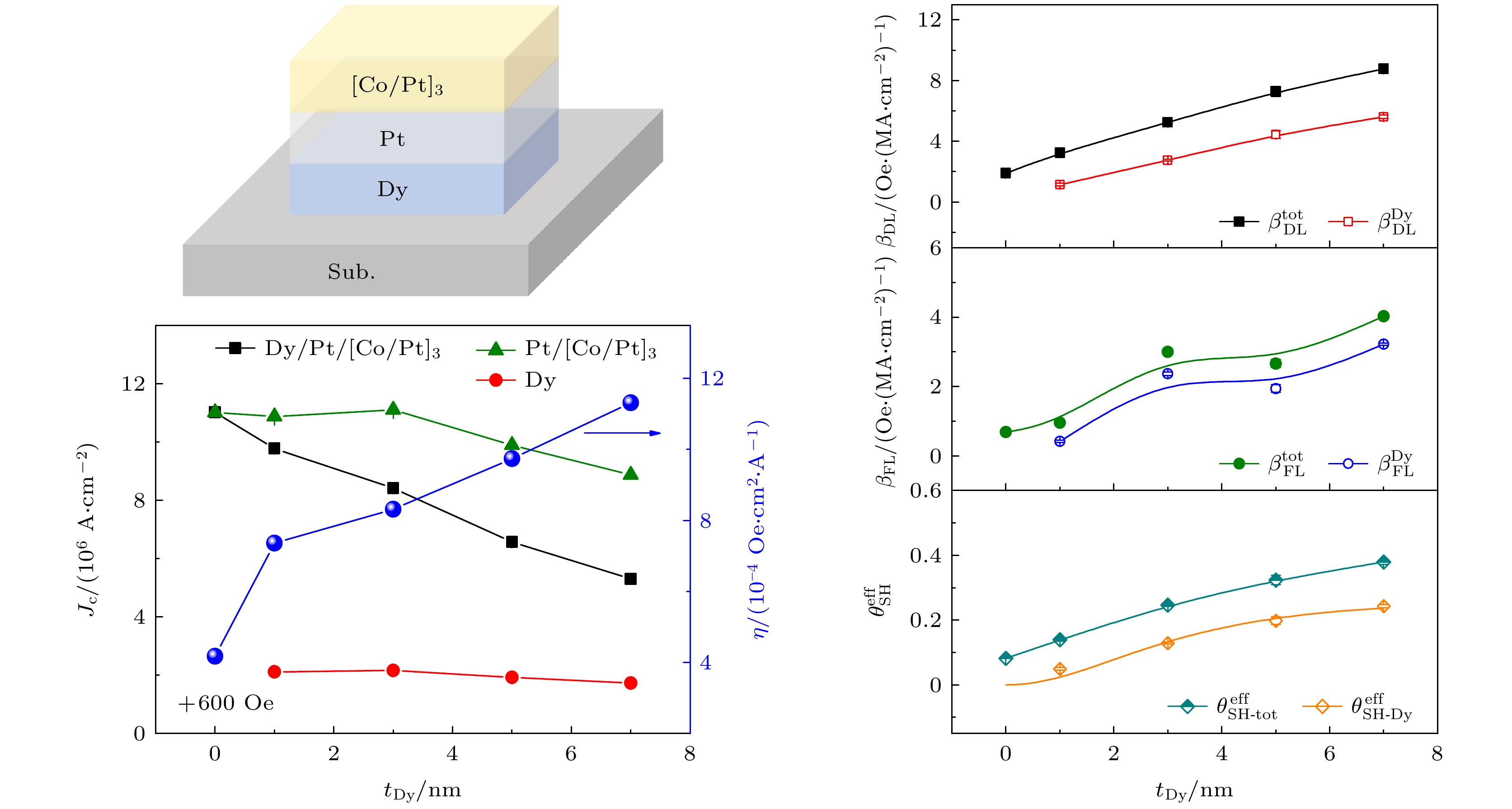
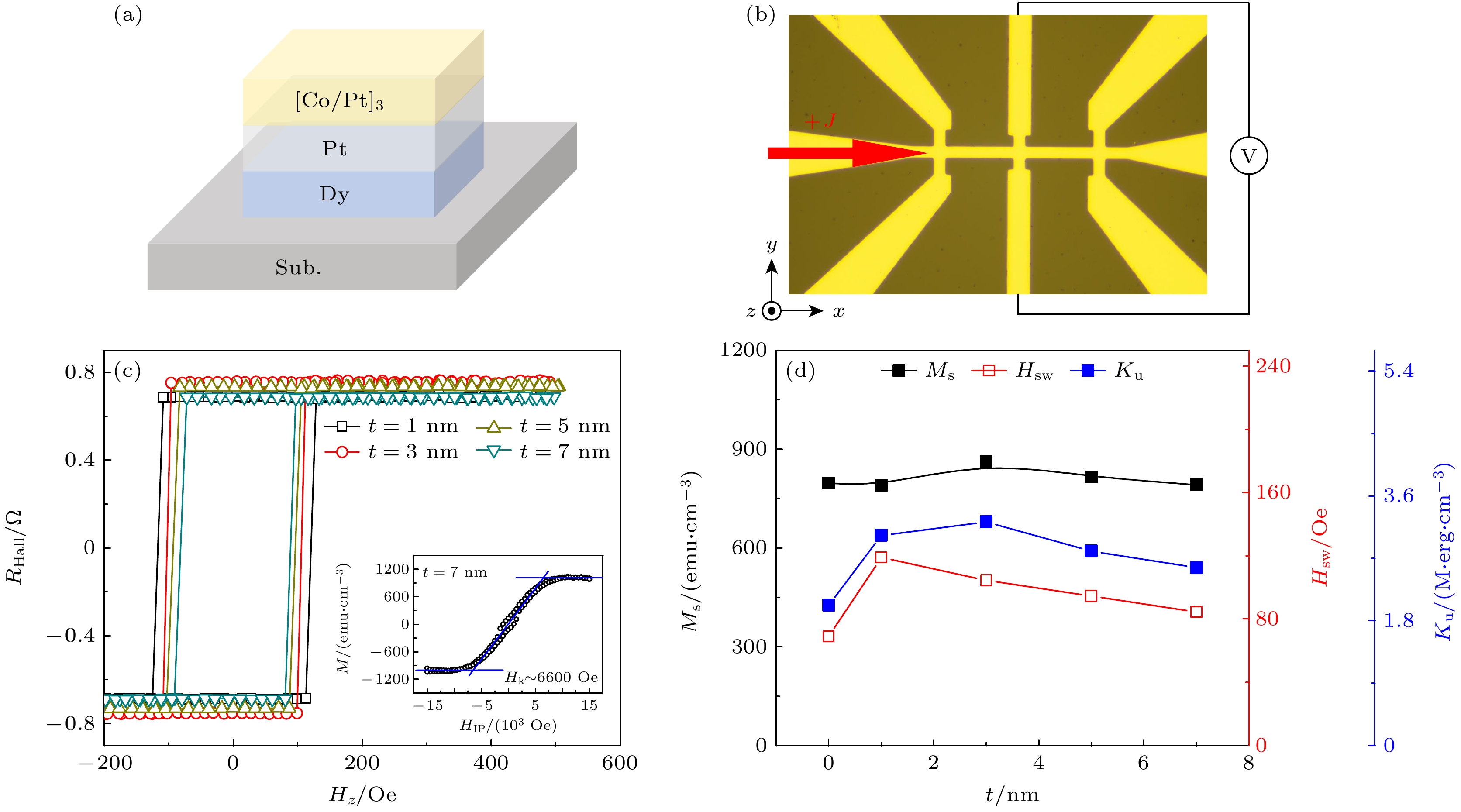
 DownLoad:
DownLoad:
